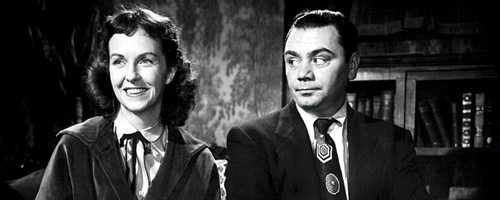Kenny Higdon Rewrites History
As this is the bicentennial of the journey of Lewis and Clark, several important exhibitions will be up this year and next. Most of these take the story very seriously while continuing to revamp it.
Kenny Higdon has a different approach. The artist likens history to paint itself, something which is “always slipping and sliding.”
Higdon uses, in his own words, “the vagueness and instability of paint to balance the vagueness and instability of history.”
His exhibition “The Death of Lewis and Clark” opens this week at the Astoria Visual Arts Gallery (160 Tenth St. in Astoria). The collection of work explores the explorers while spoofing grand historical painting and maybe even the notions of “Pacific Northwest Art.”
In these pictures, Lewis and Clark aren’t the swaggering heroes of history books. Let’s just say they’ve been challenged. In one painting they are tied together around a tree, blindfolded and gagged. In another Sasqua is dragging a man away. Another painting focuses on the remains of a disaster afloat a whirlpool along the Columbia River.
My favorite shows a man going down on a woman – Perhaps a native? She’s a fine brunette – in a sunny, yellow, log-beamed interior.
The execution is so loose you can barely make out the representational images at times. The works read as paint – just paint – at first. The longer you look, the more you can see a story. Higdon is experimenting with paint: how it changes, how closely it can come to a symbol or still be, well, nothing but paint.
Higdon also has personal aims for this body of work regarding the use of words. In his show at the Haze Gallery last month, he was happy to make pure abstract paintings in the more classical sense, untitled and completely formal. In this show at Astoria, Higdon very purposefully titles each work in both specific and random ways. Every piece lets us know we are looking at “The Death of Lewis and Clark” with those words clumsily branded repeatedly. It almost becomes a kind of anthem. Perhaps he’s looking at historical works by American painters of the nineteenth century, where we often see fancy titles in ornate gold encasements, and having his fun with them.
Higdon then lays down other words, some which are not so clear in meaning. The piece with the two having hot sex in a golden light is called “Jasper Johns.” Other titles are “Native Son” and “Stone Face.” Most of the sense in these titles is known only to the artist, but this is not all that different to how most contemporary art plays out, anyway.
To Higdon, it’s all random, the titles and even history itself. To top off his fun of words with an image, Higdon created another name for himself in these works: “OKRA,” all in capital letters. No reason for it, really, other than that he likes it.
While maintaining a stance of the random, it’s clear that Higdon thoroughly developed a master plan regarding this entire body of work. Even the image of the artist’s signature was important to him. He is certainly not the only artist to map out that very specific bit of text on a painting. The look of “OKRA,” how it sounded, the fact that it may betray some of the artist’s roots (he hails from Tennessee) are all indications that someone has thought it all out.
This same idea of underlying structure is also evident in the compositions. They may be a real mess, but such successful messes are no accident. Higdon worked for years as an illustrator. His clear understanding of what goes where really shows.
An original part of this narrative collection is a small group of paintings made in irregular shapes that the artist calls “Historical Souvenirs.” These works played on the tchotches you find at tourist havens like Astoria or Crater Lake, those key chains or shot glasses. What Higdon created are images of lost compasses and broken paddles – all suggesting a journey with a different kind of end for the explorers.
To keep the work loose and not too precious, he made all of this work on cardboard. This might imply a dull surface, but Higdon varnished his pieces in such a way that not only are they quite sturdy, they absolutely glow with the aura of an Elitist Art Object. I get the feeling that this was not the artist’s intent, especially with the wild paint application (and house paint at that) on cardboard.
I couldn’t help but think of “The Scream” by Edward Munch when I look at Higdon’s works. The recently stolen painting is on cardboard as well. That doesn’t stop it from being very archival and now worth about 100 million dollars (so say the experts), if it ever came to auction.
Higdon might have some issues about grandeur vs. the casual approach he wants to adopt. It’s something, however, that any artist who wishes to dilute the power of the elitist art world must face. In the end, we make objects for it.




